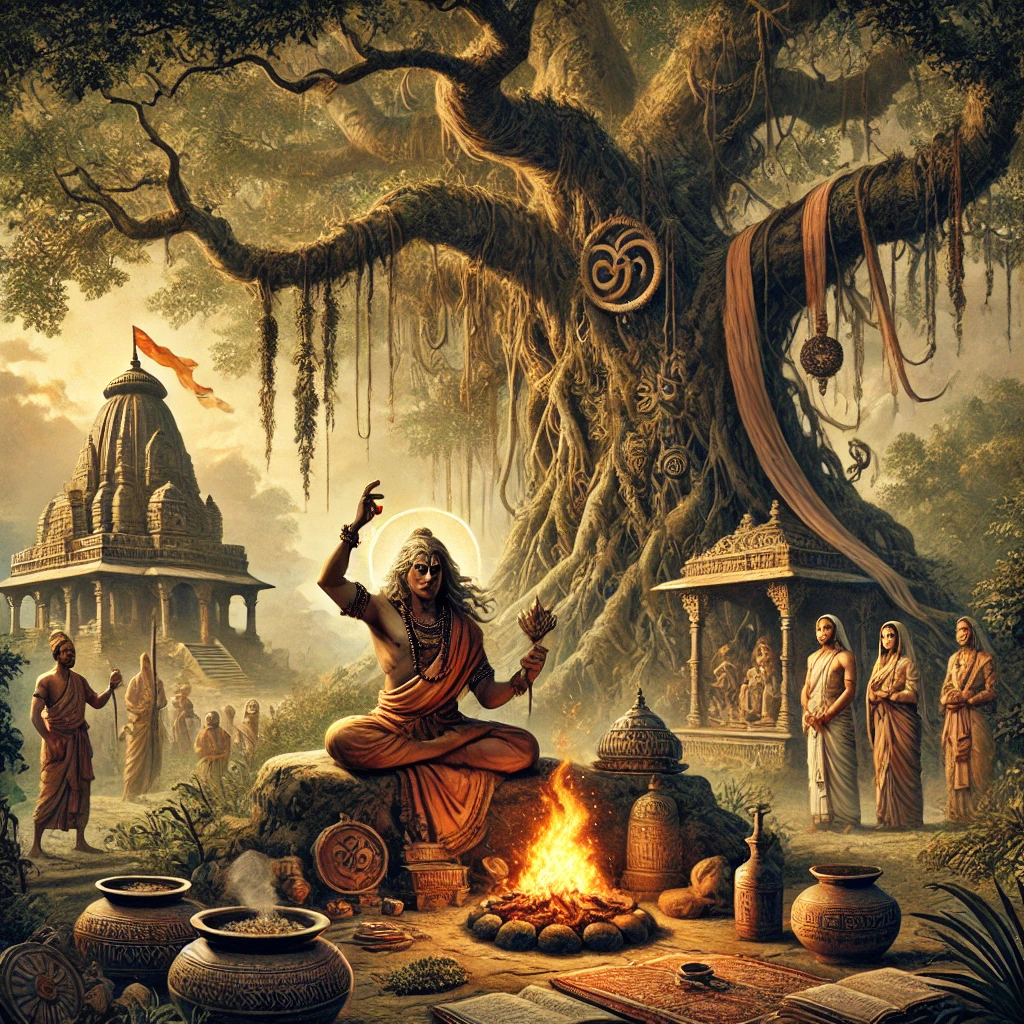In Ancient India, particularly during the Maurya Empire (circa 322–185 BCE), the concept of curses and mystical practices held a significant place within the cultural, religious, and political landscape. While “curseology” is a modern term, the use of curses and mystical practices had roots in Vedic, Upanishadic, and early Buddhist traditions, shaping societal beliefs and politics in ancient India.
1. Vedic Roots of Curses
- Ancient Indian texts such as the Atharva Veda (c. 1200 BCE) include some of the earliest records of curses. The Atharva Veda is known for containing hymns and incantations believed to protect against or inflict harm, unlike the Rig Veda, which is primarily hymns of worship.
- In Vedic society, curses were invoked by sages (rishis) as forms of punishment or deterrence. For instance, a sage might curse someone for disturbing a ritual or violating spiritual or moral codes. This was viewed as a natural extension of a rishi’s power due to their ascetic practices and deep connection to the divine.
2. The Maurya Empire and Buddhist Influence
- During the Mauryan Empire, Buddhism gained prominence, particularly under Emperor Ashoka. Buddhism generally viewed curses and mystical harm as distractions from the path of enlightenment, focusing on compassion and karma rather than retribution.
- However, folk beliefs and local customs involving curses persisted. The rural populace, even as Buddhism spread, held on to practices rooted in earlier Vedic traditions and tribal shamanism, where curses could still be seen as effective means to address social grievances or invoke divine justice.
- Jataka tales and Buddhist texts sometimes reference stories where curses are used, primarily as moral tales showing the repercussions of ill intentions. Buddhist narratives often reframed curses as self-imposed karma or misfortunes caused by one’s own actions rather than external mystical forces.
3. Political Use of Curses in Mauryan Society
- The Mauryan court and its politics were not immune to the power of belief in curses and mystical protection. Royalty and politicians employed astrologers, diviners, and ascetics to protect against “evil eyes” or curses from rival factions.
- Kautilya (Chanakya), the advisor to Chandragupta Maurya, is thought to have acknowledged mystical protections and curses in his text Arthashastra, a treatise on governance. While the Arthashastra is largely pragmatic, Kautilya recognized the influence of superstition and recommended tactics to harness or counter it to maintain order or manipulate adversaries.
4. Ritualistic Practices and Protective Charms
- Ancient Indian society during the Maurya period also saw the use of protective charms and amulets to guard against curses. These charms were believed to counteract ill-willed curses or protect one’s household and family.
- Rituals conducted by local priests or spiritual practitioners often included mantras, offerings, and even small sacrifices to appease deities or spirits thought capable of both blessing and cursing.
5. Popular Folk Practices
- Folk culture in ancient India was rich with beliefs around curses. Villages and local communities practiced a form of “curse justice” where, if someone was wronged, curses were sometimes used as social deterrents. This acted as a form of societal regulation, holding people accountable through the threat of supernatural repercussions.
- Examples include invoking village deities or using specific herbs and objects believed to carry potent energies, aimed at causing misfortune to those who committed wrongs against others.
6. Legacy and Later Influence
- The concepts of curses and protection rituals in the Mauryan Empire laid a foundation that continued into later Hindu and folk traditions. Though Buddhism largely eschewed curses, Hindu epics like the Mahabharata and Ramayana (which reached their current form post-Maurya period) are replete with examples of curses by sages and gods, reflecting ancient Indian society’s complex relationship with curses as a tool of both justice and caution.
While Buddhism and later Jainism promoted more karma-centered views, the mystical and punitive nature of curses retained a presence, illustrating the tension between ascetic spirituality and popular folk beliefs in ancient Indian culture. The era’s curse practices show how mysticism intertwined with governance, religion, and social order, ultimately influencing Indian civilization long after the Mauryan Empire’s decline.
